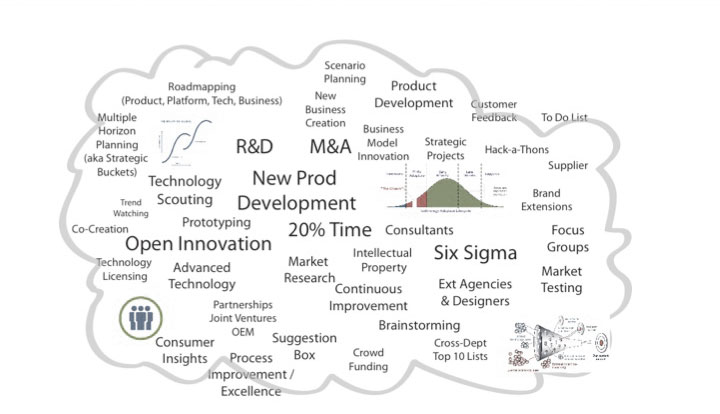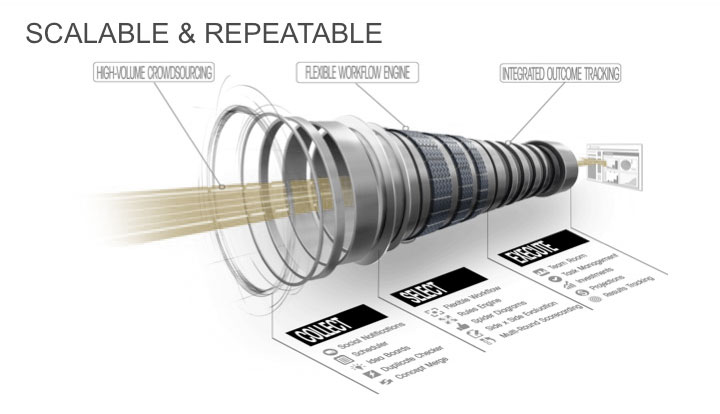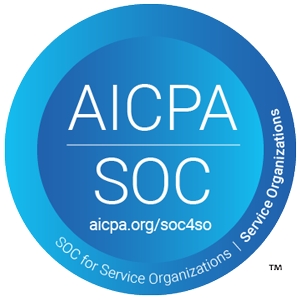This blog post is republished from an interview by Innoboard of Paul Tran, Brightidea’s Director of Enterprise Sales and Global Partnership.
Innoboard: There is no consistent definition for innovation. Every industry and every department perceive it differently. How do you define innovation at Brightidea?
Paul Tran: We define innovation as simply “doing something new that creates value.” Corporate innovation is a cloud of confusion (see illustration). This makes it difficult for organizations to know where to start. Couple that with the fact that dedicated corporate innovation teams typically are very small with limited budget but have huge mandates. They need tools that enable them to accomplish a lot with limited resources. At Brightidea we focus on providing a “structured innovation process that delivers measurable outcomes.” This philosophy extends to everything we do. Which is why we develop and market a platform that is specifically designed to take ideas to reality through a very structured process. Collection of ideas is the easy part—executing on those ideas is hard work.

Corporate innovation is a confusing cloud of different (and often competing) concepts, definitions, and priorities.
With your software solution you build a process for ideas and innovation projects for your customers. What are the three most important elements that each innovation management process needs?
A corporate innovation pipeline consists of three main phases, Collect, Select, Execute, in that order. Each of these phases will have different audiences for example Collect phase will be the community from which your ideas will come from. Select phase could be your subject matter experts (SMEs) evaluate and select the best ideas through a variety of tools. Finally, the Execute phase is where selected ideas have turned into projects and project members are prototyping and testing those ideas for launch.

A corporate innovation pipeline consists of three main phases, Collect, Select, Execute.
You worked with innovation departments of many different companies. What characterizes a very good and a very bad innovation department?
Just having an innovation pipeline is not enough. I’ve seen very good innovation departments create an Innovation Strategy which consists of at least these five components:
- Innovation Governance (roles and responsibilities)
- Innovation Platform with defined schedule of innovation challenges
- Communication Plan
- Metrics and Reporting (how do we know we’ve succeeded?)
- Rewards and Recognition Plan (sustaining participation over long periods of time)
I would say that the single largest issue I’ve seen with very bad innovation departments is the lack of executive support for their program and initiative. In my mind, innovation is a top-down initiative. Which is why executive support is so important. It allows the innovation team to reach into all areas of the business to find new stakeholders and expand their initiative. Executives remove organization roadblocks for the innovation program manager.
You’ve lived and worked in Silicon Valley for many years. In your opinion, what distinguishes the Bay Area from any other innovation cluster?
Silicon Valley is an entire ecosystem that has been developed over a very long period of time dating back to semiconductors. Companies such as Fairchild, National Semiconductor, Intel, and AMD. Then you have corporate think tanks such as Xerox PARC whose engineers invented the mouse & GUI (which inspired Apple), Postscript & laser printer (which started Adobe), ethernet & computer networks (which started 3Com), and many others. You also have arguably some of the best Universities who encourages entrepreneurship such as Stanford and Berkeley. And finally you have a a strong network of Venture Capitalists that provides seed funding all the way through series A, B, C etc and finally IPO. This makes the San Francisco Bay Area unique and is not so easily replicated. It’s really a complex mixture of things that have taken a long time to develop.
What are your goals regarding innovation for the next 12 months?
Over the next 12 months we’ll continue to develop our existing product in support of corporate innovation programs run as a shared service. We’ll also be further developing our newest product in support of fully funded innovation labs, as well upcoming products for businesses to digitally transform themselves and to actively engage in open innovation.
Over the longer horizon we believe that innovation will eventually be as easy as turning on a light switch. Our goal is to eventually build the “innovation grid” that will connect all organizations and ultimately accelerate innovation globally to solve some of humanity’s biggest issues such as the environment, healthcare, and energy.


